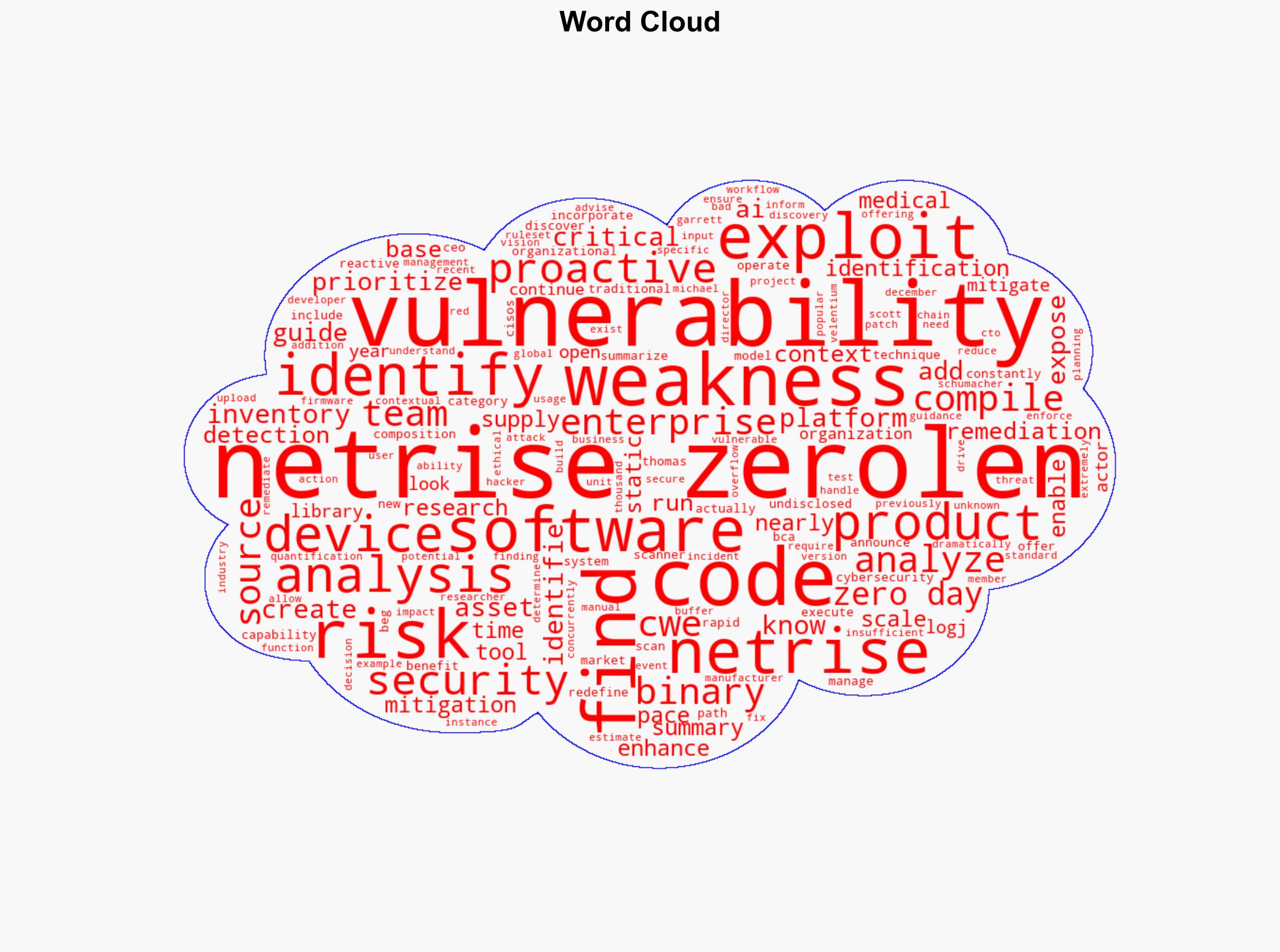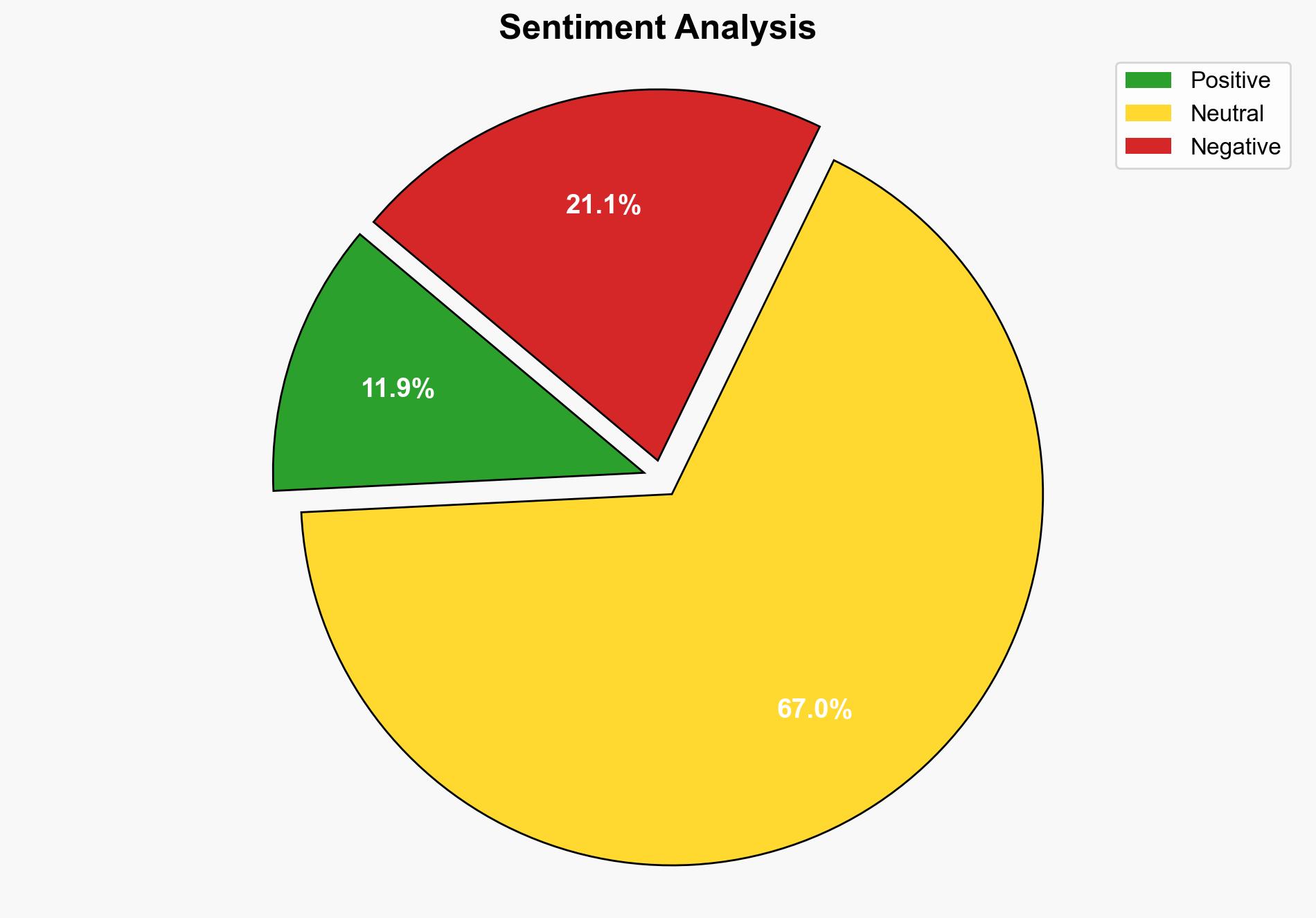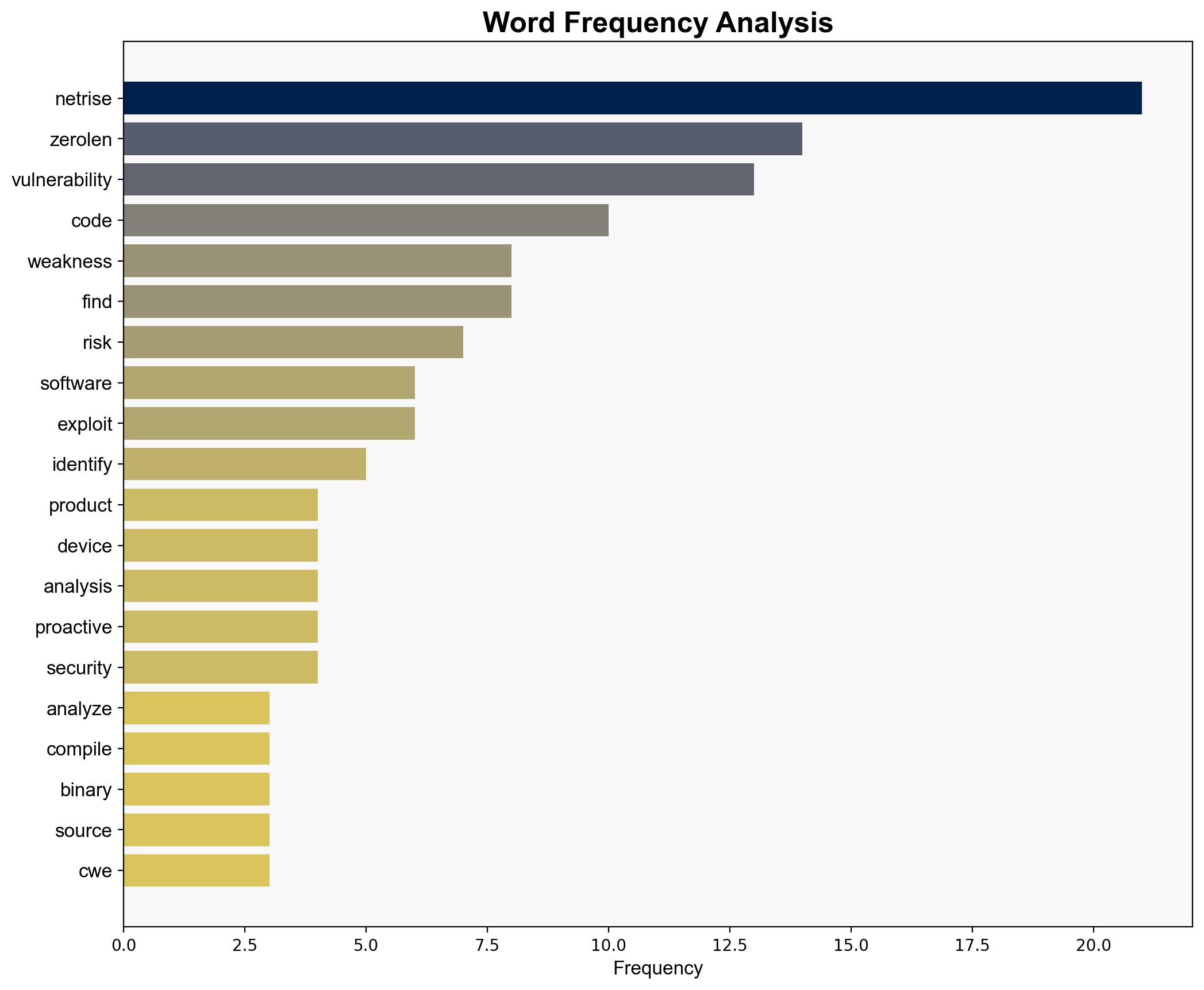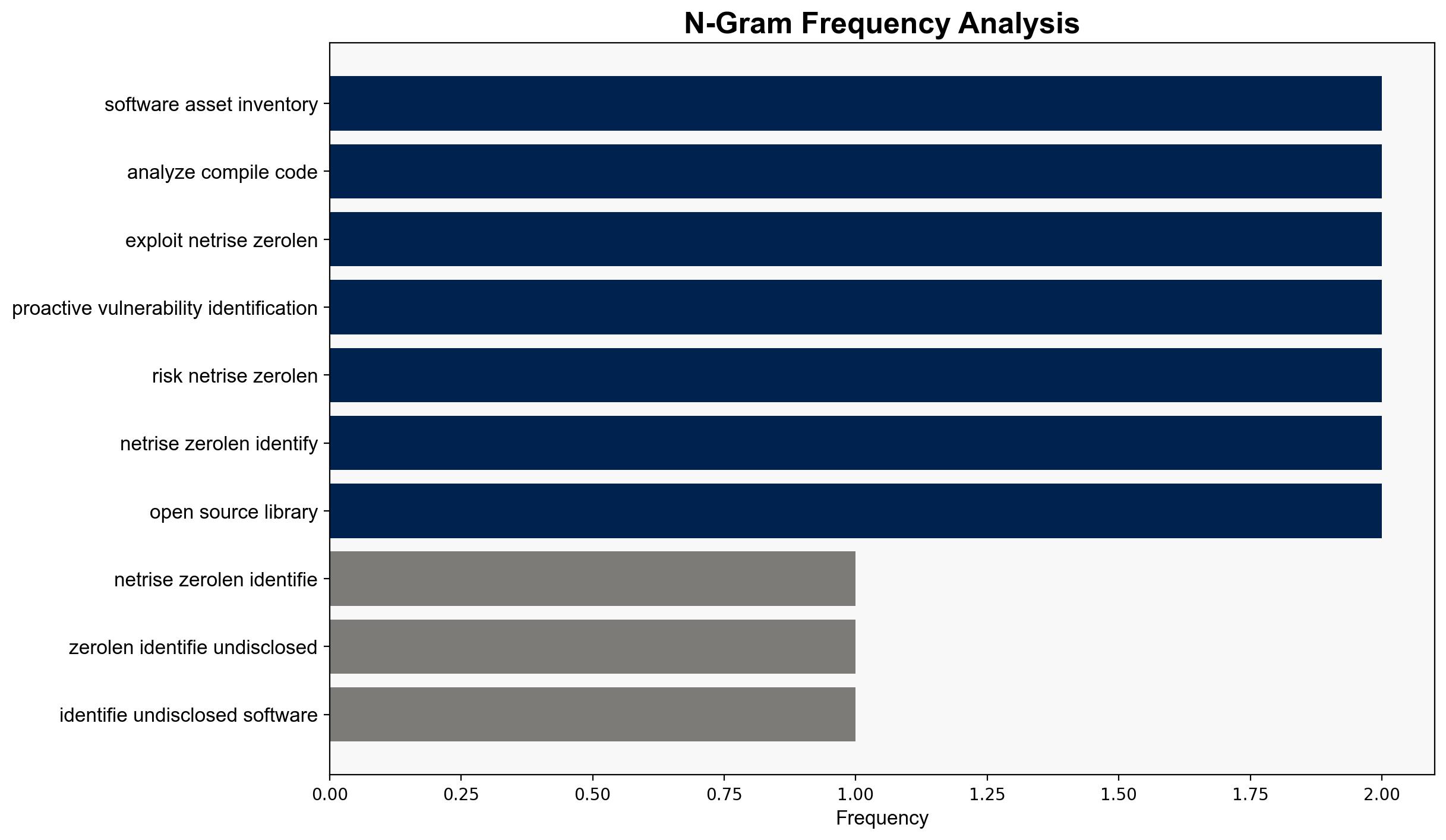NetRise ZeroLens identifies undisclosed software weaknesses – Help Net Security
Published on: 2025-04-28
Intelligence Report: NetRise ZeroLens identifies undisclosed software weaknesses – Help Net Security
1. BLUF (Bottom Line Up Front)
NetRise has launched ZeroLens, a platform that identifies previously undisclosed software vulnerabilities through Binary Composition Analysis (BCA). This tool enhances risk management by proactively detecting weaknesses in compiled code, offering significant advantages over traditional vulnerability scanners. Key recommendations include integrating ZeroLens into cybersecurity strategies to improve vulnerability detection and mitigation processes.
2. Detailed Analysis
The following structured analytic techniques have been applied to ensure methodological consistency:
Analysis of Competing Hypotheses (ACH)
ZeroLens offers a novel approach to vulnerability detection by analyzing compiled code rather than relying solely on source code scans. This method is less likely to miss vulnerabilities that traditional scanners might overlook, making it a robust tool for identifying software weaknesses.
SWOT Analysis
Strengths: Proactive vulnerability detection, AI-driven analysis, and comprehensive risk quantification.
Weaknesses: Potential integration challenges with existing systems.
Opportunities: Enhanced security for industries reliant on firmware, such as medical devices.
Threats: Rapid evolution of cyber threats that may outpace current detection capabilities.
Indicators Development
Monitor for signs of increased exploitation attempts on vulnerabilities identified by ZeroLens, particularly in sectors with high reliance on embedded systems.
3. Implications and Strategic Risks
The introduction of ZeroLens could shift the cybersecurity landscape by encouraging a more proactive approach to vulnerability management. However, the reliance on AI and compiled code analysis may introduce new challenges, such as false positives or integration issues with existing security frameworks. The tool’s ability to detect zero-day vulnerabilities could significantly reduce the risk of widespread cyber incidents similar to the Log4j exploit.
4. Recommendations and Outlook
- Integrate ZeroLens into existing cybersecurity protocols to enhance vulnerability detection capabilities.
- Conduct scenario-based testing to evaluate the tool’s effectiveness in various threat environments.
- Monitor developments in AI-driven cybersecurity tools to stay ahead of emerging threats.
5. Key Individuals and Entities
Thomas Pace, Garrett Schumacher, Michael Scott
6. Thematic Tags
(‘cybersecurity’, ‘vulnerability management’, ‘AI-driven analysis’, ‘proactive threat detection’)




